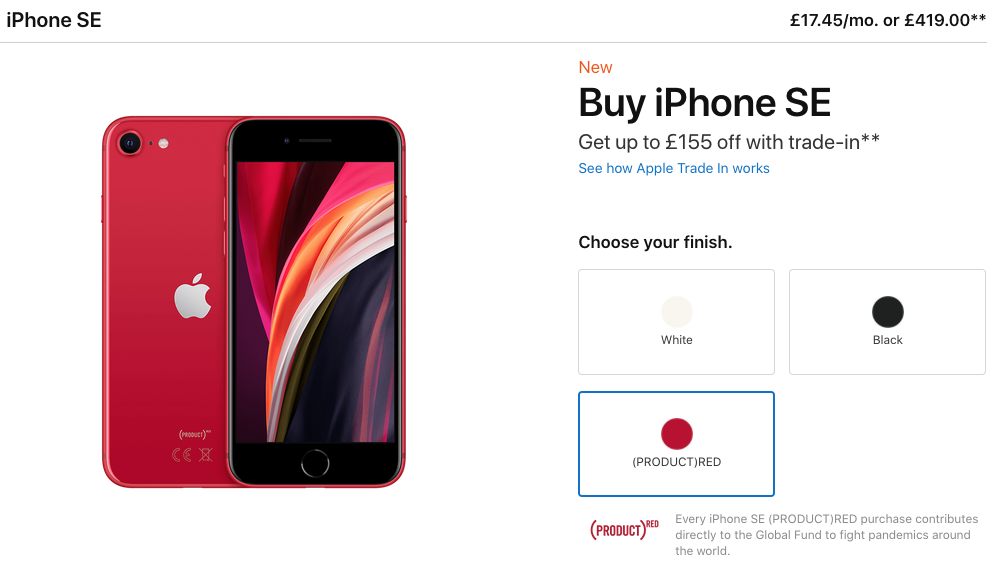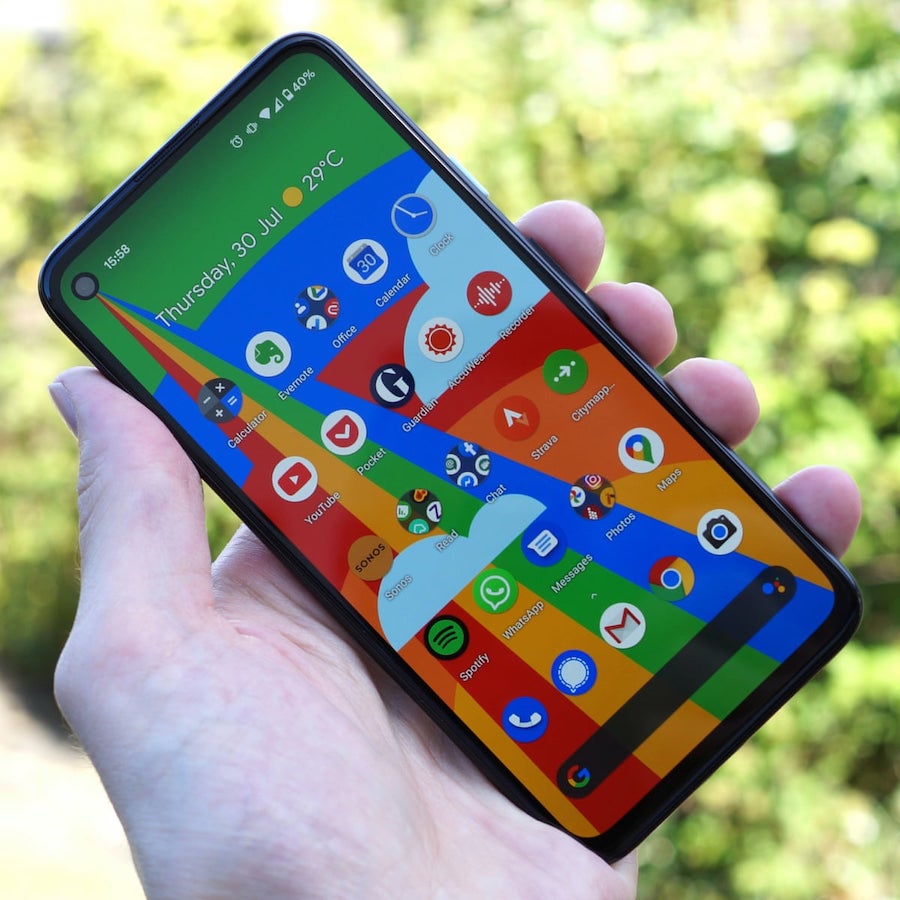I should also say that I'm a in privileged position in that I own (or, usually, have been loaned) quite a number of smartphones across all OS over the last few years, as part of my reviewing jobs - but this does put me in a good place to assess what's good and bad in terms of recommending a replacement for, say, a classic and much-loved Lumia.
It's not just a question of degree, either, i.e. whether getting something expensive running Android will be faster or larger or have better battery life - there are genuine step change aspects which mean that one might be forced to another platform whether one likes it or not:
- Biometric support for logins. Good examples of this are being able to log into banking applications with one tap of a fingerprint on a sensor or a glance at the front camera array, or being able to tap-to-pay at a terminal in a shop. Yes, Lumias have iris recognition and yes, the IDOL 4 Pro has a fingerprint sensor, but in both cases the implementation is dodgy and there's also simply not the same degree of integration with applications and services, and by a huge margin.
- Specific applications that can't be accessed at all, even via a browser. Snapchat comes to mind, but I'll bet there are many others, for more serious uses. When you need a particular application (or, hey, a game) and it simply doesn't exist in any form under Windows 10 Mobile then your hand is forced.

At which point, the question becomes, what to move to? A cynic might say 'Almost anything else', but I argue here that anyone steeped in Lumias, in particular, will have certain hopes of a replacement device, over and above the biometrics and ecosystem factors just mentioned:
- A good camera, not too much artificial enhancement, some zoom or wide angle options would be nice too
- High amplitude stereo microphones, for recording music, for example
- A high contrast screen that works well in daylight
- Qi wireless charging if possible
- microSD expansion, for keeping hundreds of GB of media on hand and instantly swappable, or at least an option of 128GB or more built-in
- Ideally, a 3.5mm audio jack, for plugging in headphones and auxiliary systems (cars/hi-fi, etc.)
- Plugging it into a Windows computer (or Mac) should let you drag and drop content in either direction - typically bulky media (movies, music). All Windows phones do this as a matter of course (at least to a Windows PC), most Android phones do too (with a permissions dialog to accept in the UI), while iPhones show their photo/video content at least and iTunes/Music/etc. can be used to sync media and more with a mouse click.
Not all of these are givens in 2020's phone hardware landscape, hence my parody marketing pitch the other day.
In terms of interface, Android is the way to go, not least because it's utterly trivial to change the 'launcher', your primary interface with the phone, right down to using the first party 'Microsoft Launcher' and effectively getting quite a bit of the Microsoft feel and the Microsoft services. (See also, from 2017, my detailed look at using Microsoft applications and services on Android.) There are even launchers like Launcher10, which actually emulates Windows 10 Mobile.
iOS used to have the counter-argument that there's so little to fiddle with that you don't have to spend hours setting things up, but the recently released iOS 14, available for almost all iPhones, adds homescreen widgets that have a lot in common with Windows Phone live tiles. And in many ways a late 2020 iPhone set-up is closer to something a Lumia owner would be familiar with than most Android set-ups. Who'd have thought it?
So, which phones should you look out for? Which ones satisfy most of the expectations above and will be the best fit for you?
As usual, I'll try to pick devices at different budget points and note that Huawei is now out of the running due to uncertainty as to its future in the West in terms of updates, amidst the whole 'Donald Trump vs China' trade/entity war - I have a P40 Pro here and it's a day to day disaster in terms of application updates and security (in my opinion).
Let's go in cost order, from highest to lowest, so the further you read the less you'll pay(!)
Apple iPhone 11 Pro, from £1049
2019 marked the first time I recommended an iPhone as a Lumia replacement and for good reason - the camera system in the iPhone 'Pro' range really is that good. With plenty of input from ex-PureView man Ari Partinen (who's now ex-Apple, but that's another story) and a team of - literally - thousands at Apple, the iPhone 11 Pro's photos, from all three lenses, aren't massively ruined by over-sharpening (as is common on many modern camera phones) and have admirable IQ (Image Quality) all round. With a big camera update ('Deep Fusion') implemented after launch, with pro-level handling of light and texture, the imaging system got better again - see my imaging comparison here. And see my video walkthrough of the iPhone 11 Pro's imaging prowess here.

On the biometrics front, the iPhone X range introduced the world to genuinely useful face unlocking - foolproof and fast, and this is still in place on the 11 series. I've used every authentication system since the start and Apple's Face ID (aped by Google in its ill-fated Pixel 4 series before being dropped for the Pixel 5 etc.) is the most convenient. No worries about finding the fingerprint sensor, if you're looking at the phone then you're in. And also into a great many applications, I've been impressed by how many third party iOS applications tie into Face ID to make sure you're allowed into their contents. (A Covid-19 note: Face ID won't work in a shop if you have a mask on, but I don't think we can blame the tech for such a drastic world state...)

Add in just about the best stereo speakers (with true Dolby Atmos surround sound - really, the width of the sound stage has to be believed) on a mainstream compact phone and also the longest battery life (verified by me) and it's only iOS itself, plus the price, that add doubt. See above for my comments on operating system, but if you're OK with the sand-boxed nature of iOS (more so than Windows Phone, anyway) then the iPhone 11 Pro, as a long term phone investment, is worth every penny. You'll get warranty and support and updates for at least four years, maybe five, so yes, this is an expensive, but very safe option. Remember the old Stella Artois (beer) slogan? "Reassuringly Expensive"!
Sony Xperia 5 ii, £799
A slightly odd choice here, since I haven't handled this yet, but the 'Xperia 5 ii' seems to offer all the goodies of the £1000+ 'Xperia 1 ii' (compared here and imaging test here) but in a smaller and lighter form factor. And £300 cheaper, though still expensive compared to the Pixel and POCO devices below, of course. But you do get all the bells and whistles you'd hope for from a classic Lumia, including dedicated two stage shutter key, top notch speakers, headphone output, and imaging.
My only beef with the Xperia 1 ii (aside from price) was the dodgy processing on the telephoto camera, so hopefully that will have been sorted out for this generation of the ZEISS lens-ed camera trio. Watch this space.
The internals are lightning fast, the waterproofing present and correct, there's 8GB RAM and 128GB plus microSD, the Xperia 5 ii has a clumsy name but the phone itself looks anything but. I do think the launch price is too high, but watch the pre-order page for special offers, the first month or so of a Sony release normally sees good accessory (headphones, etc) deals, which help.
iPhone SE (2020), from £419
Also with iOS 14 now onboard as the iPhone 11 Pro, with widgets galore, this is the cheapest 2020 iPhone by far and has flagship internals plus Qi charging and stereo speakers, plus full water and dust proofing, all attributes not normally seen at this price point. If you want to play with iOS then this is the best way in, though do note that the re-use of the iPhone 8 chassis means large top and bottom bezels.

That bottom bezel does house a great Touch ID sensor though, meaning easier authentication and unlocking in shops in these pandemic mask-wearing times. And with the Product Red version here, yuo're also helping a good worldwide charity.
Pixel 4a, £349
Google's budget range of Pixels is immediately appealing for two reasons (other than the halved prices!) - the same excellent camera system as the flagships (see my Lumia 950 head to head), plus the inclusion of a 3.5mm audio jack, something you often lose by paying more, something I shall never understand... Build quality is excellent, though all in plastic (think old-school Lumia), and there's the usual huge benefit of Google's guaranteed three years of updates, including at least two major new Android OS versions.
From the requirements list, the main misses are Qi charging (perhaps price-driven) and lack of card expansion. But then Pixels (like iPhones) have always preferred to just have integrated storage, for simplicity. 2020's 4a scores over last year's 3a by having more RAM (at 6GB), more storage (at 128GB) and, most importantly, smaller top and bottom bezels.
Authentication, for access, online banking, passwords, etc. are via a back of device fingerprint scanner and this works very well, helped by a suitable TPU case that guides your fingertip, in my experience. But all fast and convenient and an easy recommendation.
POCO X3 (NFC) 128GB, £229
Recently compared here in terms of specs and imaging with the Lumia 950 XL, this new mid-ranger from Xiaomi hits it out of the park in terms of bang-per-buck. There's a £199 version too, with less internal storage, if you buy direct from Xiaomi. From expansion to a 3.5mm jack to a very competent camera system to loud stereo speaker to 120Hz refresh and HDR10 support on its 1080p screen, the POCO X3 is just astonishing. If you want to get going on Android without costing a fortune then this is the powerhouse starting point.

One of the cost savings from Xiaomi is again the use of plastic, but the shiny transparent coating looks every inch as premium as on a glass flagship, while actually being as durable as a 2012 Lumia...

You even get limited waterproofing and that's yet another spec point that you wouldn't expect at this price point. Highly recommended, currently on Android 10, but I'm sure it will get 11 early next year.
_____________________________
PS. If you really want value for money then the best tip I can give is to look on the second hand market, where you can get yesterday's flagship at a knock-down price, wherever you are in the world. Your local eBay is obvious but also full of pitfalls, with scammers and locked/blocked phones not uncommon. In terms of curated sellers, certainly in the UK, sign up to MeWe (a replacement for Google+, effectively) and then into the 'PSC Classifieds' group (when challenged for admittance, quote my name and the URL of this article as your way in). Then there are second hand shops which offer guarantees, such as CeX in the UK, and local equivalents around the world.

